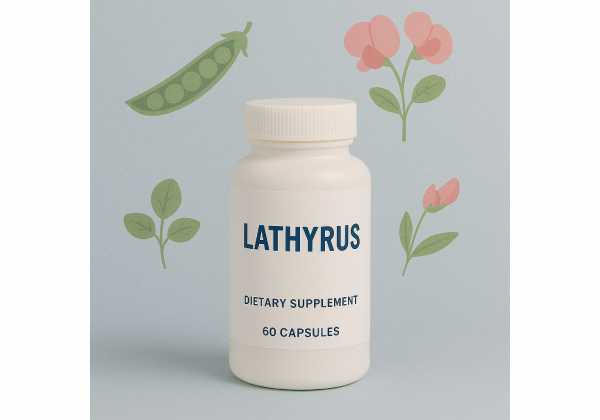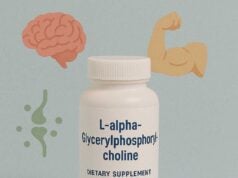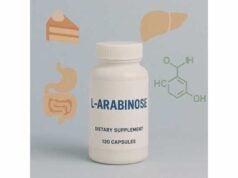
Lathyrus is a diverse plant genus best known for the grass pea (Lathyrus sativus), a hardy pulse that feeds people through drought and poor soils. As a food crop, grass pea offers concentrated protein, complex carbohydrates, and a uniquely high content of the amino acid homoarginine—yet it also carries a notorious risk: a neurotoxic non-protein amino acid called β-ODAP that, in extreme dietary circumstances, can lead to neurolathyrism (spastic weakness of the legs). This article unpacks both sides—benefits and risks—so you can make informed, practical decisions. We focus on culinary use of edible Lathyrus species (primarily L. sativus) and clearly separate them from ornamental sweet pea (L. odoratus), whose seeds are not edible. You will learn how to identify edible species, prepare and dose servings safely, avoid common pitfalls, and understand who should skip Lathyrus altogether. Throughout, we translate the evidence into clear steps you can use at home, in community programs, or when evaluating products marketed as “grass pea” or “khesari/kesari dal.”
Essential Insights
- Protein-dense grass pea can support food security in drought-prone regions and contributes lysine and homoarginine.
- Prolonged high-intake diets of grass pea with elevated β-ODAP can cause irreversible neurolathyrism; safe use depends on variety, preparation, and mixing with other staples.
- Practical intake: choose low-ODAP varieties (<0.10–0.15% β-ODAP), prepare by prolonged soaking plus boiling, and keep portions to occasional 40–80 g dry seeds per serving mixed with cereals.
- Avoid use (or seek medical guidance) if pregnant, breastfeeding, a child, undernourished, or if spasticity/neurologic disease is present.
Table of Contents
- What is Lathyrus and why it matters
- Does grass pea offer real benefits?
- How to use Lathyrus safely in diets
- Who should avoid or take precautions
- Common mistakes and troubleshooting
- What the evidence says
What is Lathyrus and why it matters
Lathyrus is a genus of legumes that includes dozens of species adapted to tough environments. The food-relevant species is Lathyrus sativus, commonly called grass pea, chickling pea, khesari/kesari dal (South Asia), or almorta (Spain). Farmers value it for drought tolerance, ability to fix nitrogen, and for grains that store well and cook into soups, stews, and flours. In subsistence settings, it often serves as an “insurance crop” when cereals fail.
Nutritionally, grass pea seeds provide roughly pulse-like macronutrients: high protein (often 20–30% by dry weight), digestible starch, and fiber. A distinctive feature is L-homoarginine, a non-protein amino acid that can act as a substrate for nitric oxide synthesis. This has prompted interest in potential cardiovascular support, though this is not a therapeutic product and human clinical data remain limited. Grass pea fits vegetarian and gluten-free diets and can diversify protein sources in school feeding, disaster relief, and low-input farming systems—when used correctly.
However, parts of Lathyrus plants (especially seedlings, leaves in early growth, and seeds of certain varieties) contain β-ODAP (β-N-oxalyl-L-α,β-diaminopropionic acid). β-ODAP is heat-stable enough that poor processing or prolonged single-food dependence can, in susceptible conditions (notably protein/antioxidant deficiency), precipitate neurolathyrism. This manifests as gradual or sudden onset spastic paraparesis of the lower limbs. Historically, outbreaks arose during famine when grass pea became a dominant staple for months.
It’s crucial to distinguish edible Lathyrus species from ornamental sweet pea (Lathyrus odoratus). Sweet pea seeds are not food and contain toxins implicated in osteolathyrism/angiolathyrism; they should never be eaten. Similarly, wild Lathyrus species vary in β-ODAP; culinary use should stick to known, improved food varieties.
Practical takeaway: Lathyrus can be both a resilient food and a toxic risk. Responsible use hinges on (1) selecting low-β-ODAP varieties, (2) proper soaking and boiling, and (3) limiting frequency and share of total calories, especially for children and undernourished adults. We will detail each point below, with concrete numbers and kitchen-ready steps.
Does grass pea offer real benefits?
Nutrition and satiety. Cooked grass pea provides protein comparable to other pulses, with a favorable lysine profile that complements cereals. In resource-poor settings, this improves meal quality when beans, eggs, or meat are scarce. The seeds’ homoarginine content has drawn attention for nitric-oxide–related pathways; while intriguing, it is not grounds for medical claims. Treat grass pea as nutritious food, not as a supplement or therapy.
Agroecological resilience. L. sativus thrives with minimal inputs, tolerates drought, episodic flooding, and poor soils, and can be relay-sown into standing rice to capture residual moisture. As a nitrogen-fixing legume, it can lower synthetic fertilizer demand and fit into rotations to diversify smallholder risk. For humanitarian and climate adaptation programs, this resilience is the primary “benefit.”
Culinary versatility. Traditional uses include dals and soups, flatbreads with composite flours, and snack foods. Flours can enrich batters and doughs when mixed with wheat, rice, or maize flour. With low-ODAP varieties and good processing, grass pea flour can be incorporated at modest proportions to increase protein and improve texture in some baked goods.
Cost and availability. In regions where grass pea is locally grown, it is often cheaper than other pulses—one reason it becomes a famine staple. That same affordability calls for safeguards so it supplements, rather than replaces, the rest of the diet.
Where benefits can be overstated. Claims that grass pea “cleanses nerves,” “boosts testosterone,” or “treats hypertension” are not evidence-based. Any cardiovascular angle would relate to dietary patterns and overall nutrient balance, not a single plant component. Marketing that downplays β-ODAP or suggests that “traditional boiling removes all toxins” is also misleading; reduction can be substantial, but not absolute, and varies by variety, plant part, and method.
Bottom line. The benefits of Lathyrus are real—protein density, climate resilience, and culinary flexibility—but they are conditional on safety practices. When you keep β-ODAP low (variety + processing) and your overall diet balanced, grass pea can contribute meaningfully to food security and everyday meals.
How to use Lathyrus safely in diets
1) Buy or grow the right variety. Seek labeled, improved low-β-ODAP varieties (often documented at <0.10–0.15% β-ODAP in seeds). Community seed programs and extension services may supply named lines with verified testing. If sourcing informally, prioritize reputable cooperatives and avoid unknown wild seeds.
2) Portion and frequency (“dosage”). Think of dosage in three layers:
- Per-meal portion: 40–80 g dry seed (about ½–1 cup cooked) per adult serving, mixed with grains or other pulses.
- Frequency: occasional to moderate (e.g., 1–3 meals per week), not daily for months on end.
- Dietary share: keep grass pea well below one-third of total daily calories. Rotating pulses (lentil, chickpea, bean) and relying on cereals/tubers breaks monotony and reduces risk.
3) Preparation to reduce β-ODAP. No single step eliminates β-ODAP, but combined methods significantly lower it:
- Long soak: 12–24 hours in ample water; discard soak water.
- Boil in excess water: simmer until tender; discard cooking water for dals/soups (or cook in two stages with a first parboil and discard, then simmer in fresh water).
- Fermentation or lactic soaking: overnight souring (e.g., with a spoon of yogurt whey) can further reduce soluble antinutrients and improve flavor.
- Milling and sieving: removing seed coats in high-ODAP lines may help, though seeds generally have lower β-ODAP than young leaves/stems.
- Avoid pressure-only “no-drain” methods as the retained liquor may concentrate soluble β-ODAP.
4) Smart mixing. Pair grass pea with cereals (rice, wheat, maize, sorghum) at ≥1:1 ratios; add pulses richer in sulfur amino acids (e.g., mung, urad) and animal-source foods if available. Include methionine- and cysteine-containing foods (egg, dairy, meat, sesame, soy) and antioxidant-rich vegetables; these diet features are thought to counter vulnerability to β-ODAP–related excitotoxic stress.
5) Choose plant parts wisely. Seeds at maturity typically contain less β-ODAP than young leaves and stems. Use leaves sparingly and avoid feeding large amounts of fresh herbage to monogastric animals. Do not consume ornamental sweet pea seeds.
6) Household tips.
- Label jars to avoid mix-ups with chickpea or split peas.
- If you grind flour, keep it to a minority share in composite flours; for flatbreads, start at 10–20% grass pea flour with wheat or millet.
- For children, use small portions folded into cereal porridges or mixed dals; never rely on grass pea as the main staple for weeks.
7) Community kitchens and relief settings. Standardize recipes: soak overnight, parboil, discard liquids, and mix with cereals at ≥1:1. Favor verified low-ODAP grain stocks and record lots. Build weekly menus that rotate pulses and ensure vitamin/mineral diversity.
A note on “supplements.” If you encounter capsules or powders marketed as “Lathyrus extract,” treat them with caution. There is no established supplemental dosage for Lathyrus in medicine or sports nutrition. Without verified β-ODAP testing and regulatory oversight, such products pose unnecessary risk.
Who should avoid or take precautions
Avoid or seek individualized medical guidance if:
- Pregnant or breastfeeding. Safety data are insufficient; prioritize pulses with long safety records (lentil, chickpea, common beans).
- Infants and young children. Developing nervous systems are more vulnerable, and children’s diets are often monotonous; use only small, mixed portions from low-ODAP seed with meticulous preparation.
- Existing spasticity, upper motor neuron disease, or unexplained gait issues. Avoid potential confounders of neurologic symptoms.
- Undernutrition or low intake of sulfur amino acids/antioxidants. Nutritional deficits may increase susceptibility to β-ODAP-related injury.
- Heavy reliance in times of scarcity. If grass pea is the only affordable food for weeks, seek any available cereals/tubers and pulses to dilute intake; request milled products or varieties documented as low-ODAP.
Drug and nutrient interactions. No specific drug interactions are established, but because β-ODAP affects excitatory pathways, people on medications that influence spasticity, seizure threshold, or motor neuron function should keep intake very conservative and diversified. As with other pulses, gas/bloating can occur; slow introduction and thorough cooking help.
Allergy considerations. True legume allergy to grass pea is rare but possible. Cross-reactivity with other pulses may occur; discontinue use if reproducible reactions emerge.
Animal feeding. Ruminants tolerate herbage better than monogastric animals, but high fresh-leaf diets can still be problematic. Use late-stage hay or low-ODAP fodder; avoid exclusive feeding.
Emergency red flags. Sudden difficulty walking, leg cramps, scissoring gait, or progressive stiffness after weeks of heavy grass pea consumption warrants immediate medical evaluation and cessation of intake. Early action matters even if deficits may not fully reverse.
Quality assurance. Whenever possible, select packaged products from producers that publish β-ODAP test results by lot, or that identify the named variety. For community procurement, request certificates of analysis and store lots separately to trace problems if they arise.
Common mistakes and troubleshooting
Mistake 1: Treating grass pea like any pulse. Unlike lentils or chickpeas, grass pea demands extra processing: long soak, parboil, discard liquids. Skipping these steps may keep soluble β-ODAP in the pot.
Fix: Build a routine—soak overnight with a pinch of acid (lemon or whey), drain, parboil 10–15 minutes, drain again, then simmer until soft in fresh water.
Mistake 2: Relying on grass pea as a staple. Outbreaks of neurolathyrism historically followed months of single-food dependence, especially when grass pea exceeded one-third of caloric intake and diets lacked sulfur amino acids.
Fix: Make grass pea a supporting player. Mix with rice, wheat, or maize; rotate with other pulses; enrich with eggs, dairy, soy, sesame, or leafy vegetables to broaden amino acid and antioxidant intake.
Mistake 3: Misidentifying species. Sweet pea (Lathyrus odoratus) seeds are not edible. Accidental substitution is dangerous.
Fix: Buy labeled food species; keep ornamental seeds stored separately and clearly marked. When in doubt, do not eat.
Mistake 4: Assuming leaves are safer than seeds. In grass pea, young leaves and stems can be higher in β-ODAP than mature seeds.
Fix: Use leaves sparingly; prefer mature, low-ODAP seed for meals.
Mistake 5: Pressure cooking without draining. Closed-system cooking traps soluble compounds.
Fix: If using pressure cookers, pre-boil and discard the first water; cook the final stage in ample fresh water and drain excess for purées.
Mistake 6: Feeding children adult portions. Children’s diets are smaller and more repetitive; proportional exposure can be higher.
Fix: Keep portions small, infrequent, and always mixed with cereals and other foods. Choose other pulses as the default.
Mistake 7: Over-trusting “detox claims.” Marketing may promise “toxin-free” or “fully detoxified” products without lot-specific data.
Fix: Look for variety names and independent β-ODAP testing; maintain conservative portions regardless.
If you notice leg stiffness, cramps, or gait changes after frequent meals of grass pea: stop intake, switch to other staples, and seek medical assessment. Bring package labels or notes about your source and preparation; this helps clinicians and public health teams respond quickly if others are at risk.
What the evidence says
β-ODAP varies by variety and plant part. Field studies tracking plants from seedling to maturity show the highest total ODAP in young leaves and early vegetative stages, with levels falling as seeds mature; mature seeds typically contain less β-ODAP than leaves, stems, or pod tissue. This supports practical advice to avoid heavy consumption of greens and to prefer ripe seeds, and it explains seasonal risk patterns (higher hazard when food shortages push people to eat immature parts).
Breeding progress is real. Modern breeding and selection programs have produced low-ODAP seed lines. Recent analyses of national varieties have reported seed β-ODAP values below commonly cited “safe” thresholds (≈0.10–0.15%), while traditional local landraces often test higher. This gap underscores the value of certified seed distribution in at-risk districts and of labeling in retail channels.
Processing reduces—but does not eliminate—risk. Soaking and boiling in excess water, discarding liquids, and fermentation can substantially lower β-ODAP, sometimes by large margins, but results depend on variety, particle size (whole vs. split), and duration. Processing should be treated as a risk reducer, not a license for unrestricted intake.
Epidemiology emphasizes dosage and diet quality. Community surveys in endemic regions continue to document neurolathyrism when households rely heavily on grass pea, especially with practices like eating immature seeds, failing to mix with cereals, or using unfavorable mixing ratios (>3:1 grass pea to cereals). Male laborers in prime working ages often carry the highest burden due to greater intake and energy demands. The condition is irreversible once established, which elevates the importance of primary prevention.
Agronomic and climate context. Grass pea’s hardiness makes it an attractive “climate-smart” option, but environmental stresses (drought, heat, micronutrient imbalances such as low zinc or excess iron) can drive higher β-ODAP synthesis in the plant. Breeding, soil fertility management (balanced micronutrients), and extension on processing are complementary levers to keep food use safe while maintaining resilience objectives.
Simple, evidence-aligned rules of thumb.
- Prefer low-ODAP varieties with documented seed β-ODAP ≤0.10–0.15%.
- Keep grass pea a minority of calories; mix ≥1:1 with cereals at meal and weekly menu levels.
- Use long soaking, parboiling, and draining; add fermentation when practical.
- Avoid feeding immature seeds or large amounts of leaves/stems.
- Protect high-risk groups (children, pregnant/breastfeeding people, undernourished individuals) by defaulting to other pulses.
Together, these points translate the research landscape into concrete, community-ready practices that maximize nutrition and resilience while minimizing the specific neurologic hazard associated with inappropriate Lathyrus use.
References
- Quantitative analysis of β-ODAP neurotoxin among different varieties of grass pea (Lathyrus sativus L.) flour: A comparative study 2024 (RCT/Analytical Study)
- Neurotoxin (N-Oxalyl-L-α,β-Diamino Propionic Acid) Content in Different Plant Parts of Grass Pea (Lathyrus sativus L.) Spanning Seedling to Maturity Stage: Does It Increase over Time? 2022
- Prevalence of Neurolathyrism and its associated factors in Grass pea cultivation areas of Dawunt District, North-eastern Ethiopia; 2022: a community based multilevel analysis 2023
- Current Perspectives on Reducing the β-ODAP Content and Improving Potential Agronomic Traits in Grass Pea (Lathyrus sativus L.) 2021
Disclaimer
This article offers general information about Lathyrus foods (especially grass pea) for education and menu planning. It is not medical advice and does not replace consultation with a qualified clinician or dietitian who can assess your health status, medications, and nutritional needs. Do not start, stop, or rely on any food or product discussed here to diagnose, treat, cure, or prevent a disease. If you experience leg stiffness, cramps, difficulty walking, or other neurologic symptoms after frequent grass pea consumption, stop intake and seek prompt medical care.
If you found this guide useful, please consider sharing it on Facebook, X (formerly Twitter), or your favorite platform, and follow us for more evidence-based nutrition articles. Your support helps us keep creating high-quality, accessible content.










